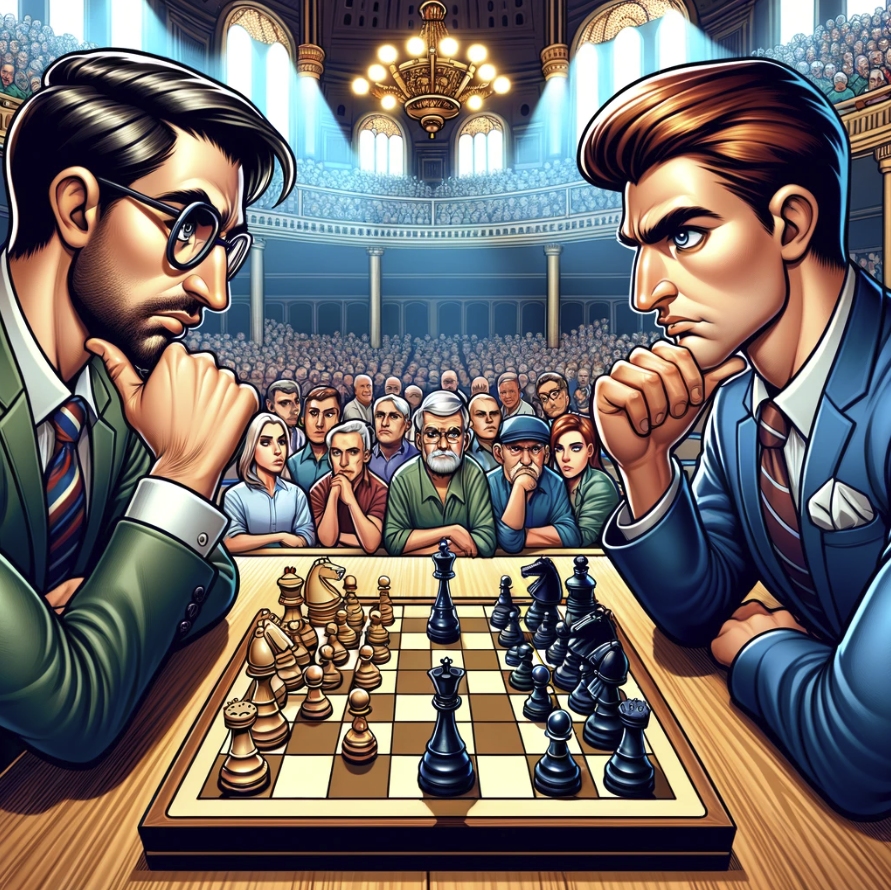In chess, the difference between a player with a rating of 2600 and one with a rating of 2800 might seem numerically small, but in terms of skill, strategy, and overall mastery of the game, it is significantly vast.
Understanding these differences requires a deep dive into the nuances of chess expertise and the attributes that distinguish the elite from the highly skilled.
Playing Strength and World Ranking
A rating of 2800 in chess is an indicator of being one of the top players globally, often ranking in the top two or three, and sometimes being the world’s number one player.
This echelon of chess mastery is reserved for those who have demonstrated exceptional skill, consistency, and understanding of the game at the highest levels of competition.
In contrast, a rating of 2600, while still signifying a player of high caliber, places an individual around the top 200 players worldwide.
This distinction in ranking underscores the elite status of 2800-rated players and the competitive gap that exists at the pinnacle of chess achievement.
Competitive Dynamics
Despite the clear gap in ranking and perceived strength, the nature of chess competition allows for the possibility that a 2600-rated player could defeat a 2800-rated player in an individual classical game.
Such an event, however, would be considered a significant upset, highlighting the exceptional nature of such victories.
The small margin of error at this level means that games are often decided by the slimmest of advantages or a single oversight.
Mastery of Chess Aspects
The superiority of 2800-rated players is evident across all aspects of the game.
These players exhibit superior calculation abilities, allowing them to foresee and evaluate complex sequences of moves more accurately and deeply than their 2600-rated counterparts.
Their understanding of strategic concepts is profound, enabling them to navigate through the intricacies of any position with a nuanced comprehension of its potential developments.
In terms of preparation, 2800-rated players are often better equipped, having studied openings and endgames more thoroughly, which translates into tangible advantages during the game.
Their play in the endgame is particularly noteworthy, as they can leverage slight advantages into winning positions with remarkable efficiency.
Specialization vs. Overall Mastery
While some 2600-rated players may specialize and excel in specific areas of the game, such as opening theory or endgames, their overall proficiency across all phases of chess does not consistently match that of 2800-rated players.
This specialization can allow them to compete with the best in the world in narrow aspects of the game but does not necessarily translate into overall competitive parity.
The Psychological and Practical Implications
The difference between these ratings can also be likened to the experience of playing against someone rated 200 points lower.
Such matchups often result in a sense of gradual outplaying, where the higher-rated player incrementally accumulates advantages.
Although not every game results in a win—due to the occasional blunder or oversight—the higher-rated player typically scores heavily over a series of games.
This dynamic is amplified at the elite levels of chess, where blunders are exceedingly rare and the capacity to capitalize on small mistakes is unmatched.
What Is the Win Probability of a 2800 Chess Player vs. a 2600 Chess Player?
The win probability of a chess player in a match against another player can be estimated using the Elo rating system, which is the method commonly used to calculate the relative skill levels of players in competitor-versus-competitor games like chess.
The Elo formula provides a way to predict the outcome of a game based on the difference in ratings between the two players.
The general formula to calculate the expected score (E) for a player is:
E = 1 / [1+10^((Rb-Ra)/400)]
Conclusion
While the numerical difference between a 2600 and a 2800 chess rating may appear marginal, the practical implications in terms of skill, strategic understanding, and competitive achievement are profound.
The elite status of 2800-rated players is a testament to their exceptional mastery of chess, encompassing a deep strategic understanding, meticulous preparation, and the rare ability to navigate the complexities of the game at the highest level.
Related


